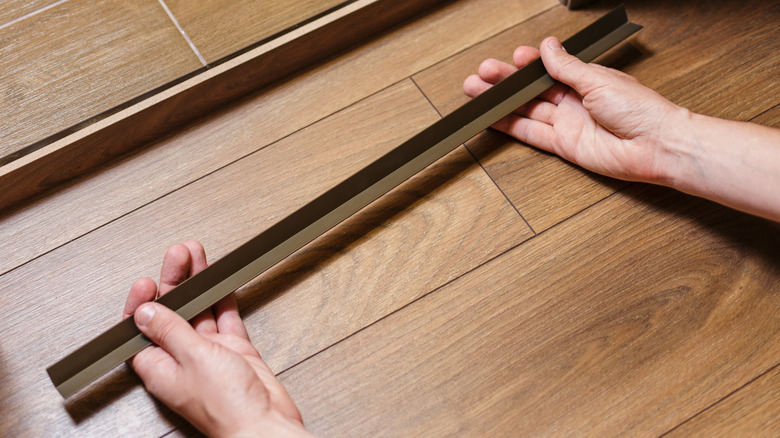The Importance Of Sealing Your Pocket Door And How To Do So
We may receive a commission on purchases made from links.
Interior doors can take up space when they swing open, which is why pocket doors are handy and have maintained popularity. These doors date back to the 1850s when people installed them as lavish entryways to dining rooms and libraries. This door system works by allowing the door panel to slide and disappear into the wall. If you are on a budget and need to revamp an open layout, you can DIY a pocket door to help create more privacy. While these doors can bring unique aesthetics to your home design, they come with a few downsides and can be drafty without proper sealing. Luckily, sealing is an easy DIY project that can make your pocket door more useful.
One of the main causes of a drafty pocket door is the wall pocket itself. With draft blockers or excluders that push out the way when you open the doors, you can insulate the gap between the door and pocket. Seal any over- or under-door drafts with draft excluders as well. After installation, test your door to see if you still feel drafts when the door is closed. By sealing out drafts, you can also control other elements like light, smells, sound, dust, and more.
Simple steps before installation
Before sealing your pocket door, you will need to do some light prep. Do you need sealing to stop constant draft? When the door is closed, check for spots where the draft may be coming from. You can test your door for drafts with this genius candle trick.
Of course, you need to buy your draft blockers. Some highly rated sealing options include the Zhilokdor Fuzzy Weatherstripping ($9.99 on Amazon) and MILEQEE Door Brush Seal ($15.39 on Amazon), which come in various lengths. Therefore, take a ruler or measuring tape to measure your door's gap size for proper fit. FYI, you can also seal windows with this material.
You should also have some cleaning tools on hand such as alcohol wipes or a microfiber cloth with water or alcohol. Clean down the door, the cavity it slides in and out from, and anywhere you plan to install the excluders. That way, you reduce the likelihood of failure by preventing the excluders from sticking to dirt and grime as opposed to your door. Try to clean inside the trailing edge of the door — the pocket it slides out from. One way to clean inside this tight area is to close the door and use a butter knife to get the cleaning cloth in the space as you move it up and down to remove dust.
Advantages of sealing your pocket door
A well-installed brush seal can also help keep out dust, dirt, and pests like small bugs. Because you're reducing the drafts in your enclosed space, you can also reduce energy costs. Therefore, you can enjoy thermal insulation that can make spending time in your room comfortable. These openings that allow such air in can also allow in other elements like smells. A sealed room near the kitchen can have protection from certain food smells like smoky food or fish. The same can be said for rooms near the bathroom.
Pocket doors can close off open spaces to create a small bedroom or office for remote work. Proper sealing can provide the sound insulation essential for your comfort and work production. After all, if you're working from home, sound insulation may be vital when you're taking work calls and video conferences. If you plan to rent out a room closed off by a pocket door, this installation can help ensure the renter's comfort. Do you need a room that is light-tight? Installing nylon brush seals can create the darkness you need for a photographic dark room or theater projection. As you can see, it only takes some simple tools and prep to make your pocket doors as efficient as they are aesthetically pleasing.


